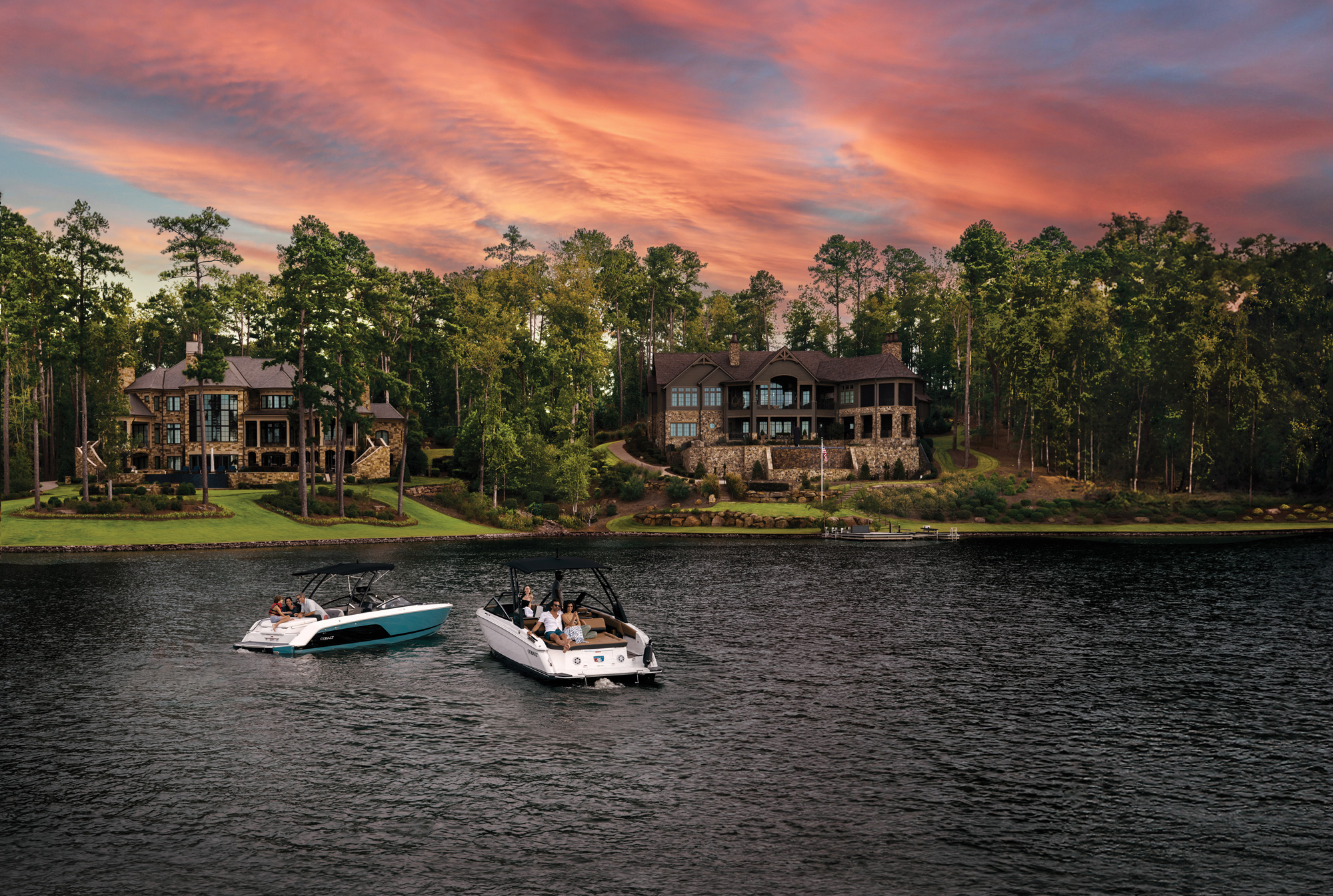
In our complicated globalized world, one might expect to see an American-made Japanese hybrid supercar with Brazilian pedigree in every Malibu driveway. So why does the 2017 Acura NSX seem like it’s from the future? Maybe because you’re parked in the past. The editor plays catch up
If you were in Maranello in 1990, you’ll remember the screams. That’s the year Acura released the NSX, setting off much waving of hands and raising of voices in a certain Italian factory better known for red cars than for red faces. Matching or besting its European targets in nearly every category—and more reliable than anything rolling out of Italy at the time (except perhaps anelloni pasta)—the Japanese street weapon with an F16-inspired cockpit was also far cheaper, sticker priced at $58,000 when a base Ferrari 348ts cost $101,050 and a Porsche 911 Carrera 4 listed for $77,800. Beating the Ferrari to 60 by nearly a second (5.2 seconds vs 6.0) and winning Car and Driver’s September 1990 “Eroticars” shootout over the 348, the Porsche, a Lotus Esprit Turbo SE and a Corvette ZR-1 (still more expensive than the NSX at $58,995), the Acura was a big deal. “This car makes a hard-wire connection between you and the joy of driving. What more could you ask?,” offered Car and Driver before proclaiming, “The NSX will make a profound change in the market for Eroticars.” And so it did.
Fast forward to 2017 and, amidst a vastly different automotive landscape full of sophisticated automatic transmissions, high-tech engines and 0-60 times that essentially have been cut in half since 1990, a new NSX has appeared. This one is built in Ohio, not Japan, making it the only supercar currently made in America (Ford’s new GT is being manufactured in Canada). It’s also the only supercar to have a female lead designer; American Michelle Christensen helmed the exterior design team. As for how it stacks up against the Italians, it’s still cheaper by some measure, with a base price of $156,000. Beyond that, one might assume that the NSX is “just” another supercar: fast, attractive and supremely capable. All of that is true—but not in the way you might think, as a friend and I learned over three days driving the new car (optioned to roughly $199,000) from near San Francisco to Los Angeles as part of a Drive Toward a Cure event, raising money to combat Parkinson’s disease (see sidebar: Drive Toward a Cure).
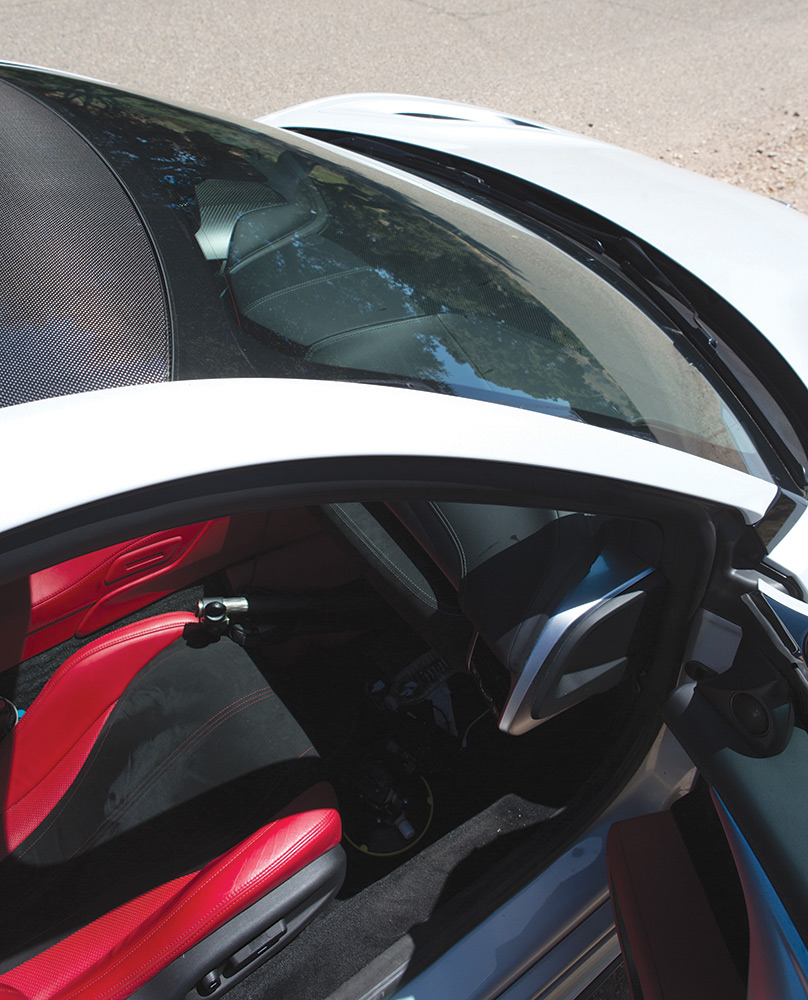
If you want the short of it: (A) we loved the new NSX and (B) it took us more than a day driving to reach that opinion. But if a date with the car is more dinner than a quick drink, that’s only because there’s a lot here to get to know. When I settled in and pressed the starter button, the full force of 573 horses… didn’t make a sound. It’s a hybrid, remember? As for being one with the car… Well, yes, kind of, but we’ll get to that in a minute. Rather than comparing it to its predecessor or to any of its contemporaries, it’s better to approach the NSX with an open mind, to regard it as something altogether new. And that newness, the array of astounding technology and innovations, is exactly why the car absolutely is an NSX. In fact, in many ways it is the very embodiment of the “New Sportscar eXperimental” spirit envisioned by original Chief Designer Masahito Nakano and Executive Chief Engineer Shigeru Uehara, who drove the first generation’s effort from the mid 1980s until the end of its production run in 2005. Re-branded “New Sports eXperience” and having undergone plenty of shifts since it was first teased back in 2007, today’s NSX is exactly that: a new experience, and one well worth having.
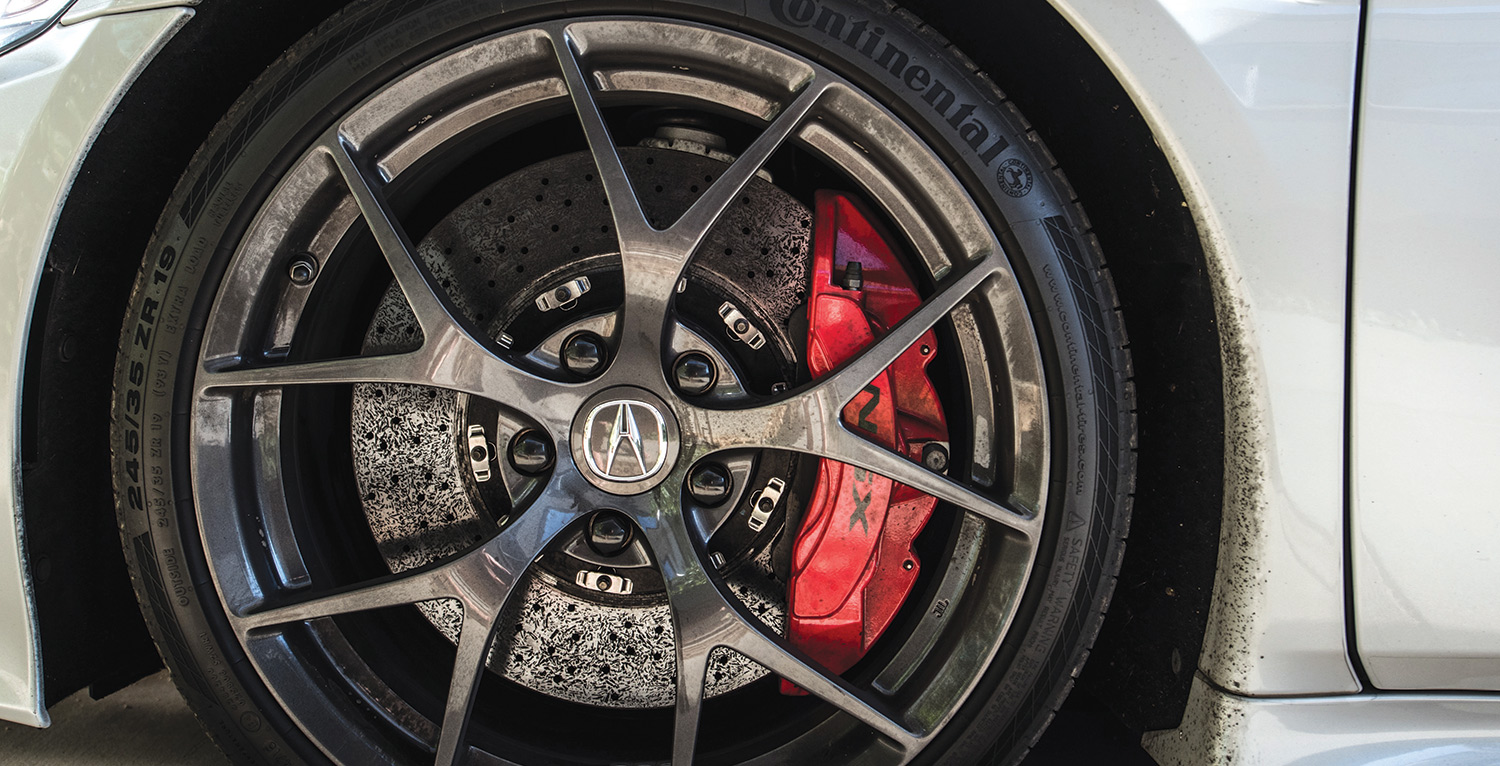
Made in the Midwest, one could argue that the 2017 NSX was built for California, with the state’s fantastic combination of twisty roads and epic views. Both were in fine supply as we left Danville and the excellent Blackhawk Museum (which holds all three of Alfa Romeo’s original “BAT” concept cars) on our way to the Central Coast town of Paso Robles, about 200 miles to the south—pleasantly more if you’re taking back roads. One by one, a parade of modern exotics and classic showpieces fired up their engines and filed out, howling, rumbling and gurgling past a small group of bystanders and other participants who nodded approvingly as each car left to join the course. In contrast, we started in “Quiet” mode (one of four that also includes Sport, Sport Plus and Track) and made nary a hum as we rolled to the start line, windows down, hearing only the squeak of the tires over the road tiles. Pausing to hand the starter our time sheet, I saw a few people chuckling and at least one shaking head. “We’re stealthy,” we told ourselves, and we were. Around the corner, though, things changed when we turned the dial from Quiet to Sport. Here, the longitudinally mounted 500hp twin-turbo V6 kicked in a little, delivering a pleasant though not overly throaty murmur from behind us, tucked-in as it is behind the driver and passenger. In Sport Plus, where NSX owners will spend a lot of time we think, the engine and performance are more dramatic, and by the time you get to Track mode from Quiet, the sound pressure level range in the cabin has increased by 25db—both an audible and a visceral shift—rendering the engine’s power, and the car’s status, undeniable. You get no such howl from the three electric motors, of course. The first is mounted directly to the crankshaft and brings 47hp and 109lb-ft of torque to the V6’s already significant 406lb-ft, contributing to a 0-60 time of near 3 seconds flat. Additionally, the two electric motors up front—one per wheel—make up the Twin Motor Unit, adding another 36hp and 54lb-ft of torque per wheel.
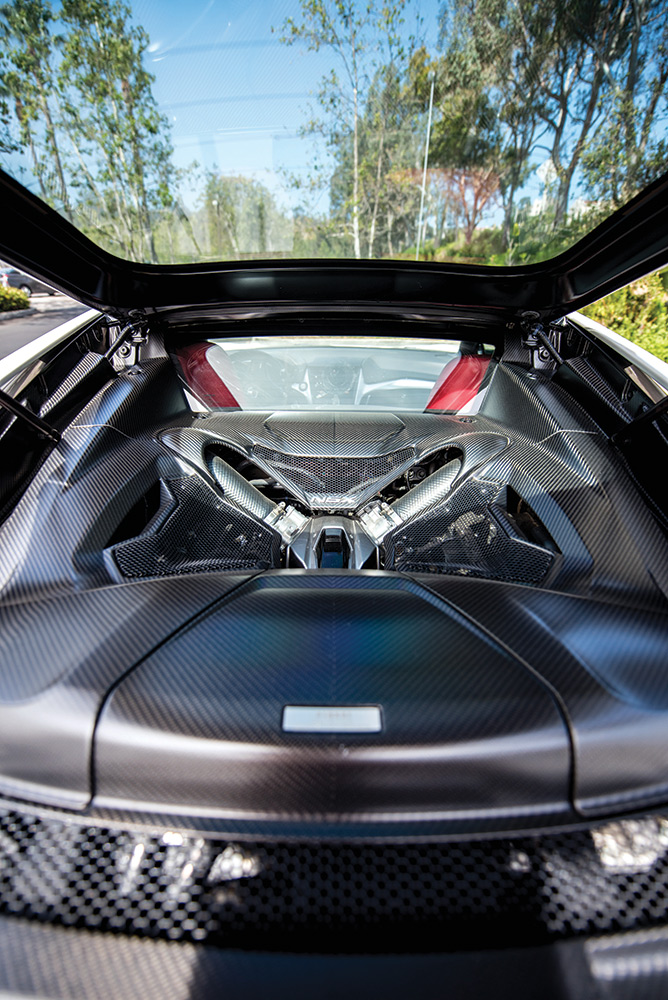
Conservatively aggregated, all of this comes to 573hp and 476lb-ft of torque. With all of the power mated to a sublime 9-speed dual-clutch transmission, there’s a top speed of 191mph and a driving experience unlike any other—a fact we were about to learn.
Once we got off the main drag and headed into a paradise playground of paved backroads free of stop signs, stop lights and anything else labeled “stop,” the fun started. Like the original, even if there’s not a lot of storage there is ample room in the cockpit in terms of body position; plenty of space for elbows and legs, great headroom, and good distance between the passenger and driver. Likewise, the seats are incredibly comfortable for being so race-inspired, and multiple days in the car posed no issues whatsoever. Considering the mileage—21mpg—the NSX would make a great tourer, but it’s likely a better weekend car given the trunk space of 4.4 cubic feet—though that was good enough for our [admittedly compact] bags and photo gear. Getting slammed back in straight-line driving was great fun, and as the numbers climbed [quickly] from double to triple digits the NSX never felt anything but solidly stuck to the ground. But when we came to the curves, we immediately realized how little we actually knew about the car.
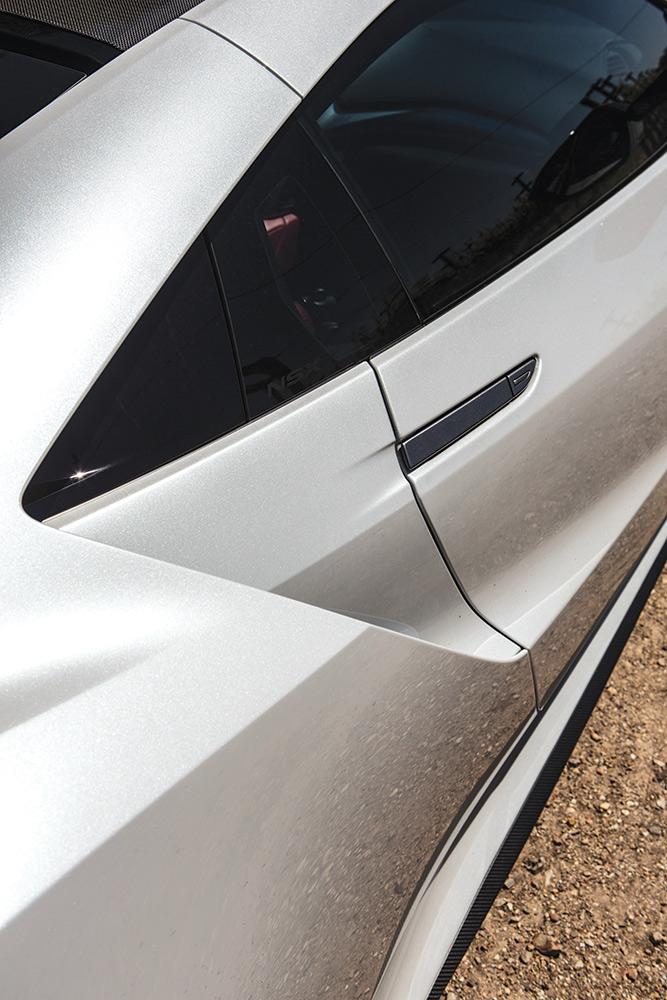
In addition to driving the front wheels, the two electric motors up front have other tricks. Torque vectoring is already part of Acura’s standard lineup in the form of its Super Handling-AWD (SH-AWD) system, which allows the vehicle to evaluate traction needs and to distribute torque to whichever wheel needs it most. But because each front wheel is independently controlled by an electric motor on the NSX, both torque and counter-torque can be applied, with the latter essentially allowing a wheel to be dragged, resulting in pivot-like turns. This, the Integrated Dynamics System and and a mechanically-based limited slip differential all make great use of a very stiff chassis and body/frame with serious torsional rigidity to create handling that is almost beyond comprehension.
And here’s where we get into why the new NSX might be an acquired taste for traditionalists: There’s a lot “by wire” on this car. That is, computer controlled. Steering feedback reminded us of flying lessons we’ve taken, and the brake pedal is something of a brilliant illusion, with programmed feel to simulate resistance. You tell the car where you want to go and it goes there. You tell it you want to brake and it brakes—very well in fact, courtesy of the large mechanical Brembos and the electric front motors, which also help to slow things down, gathering energy for the battery in the process.
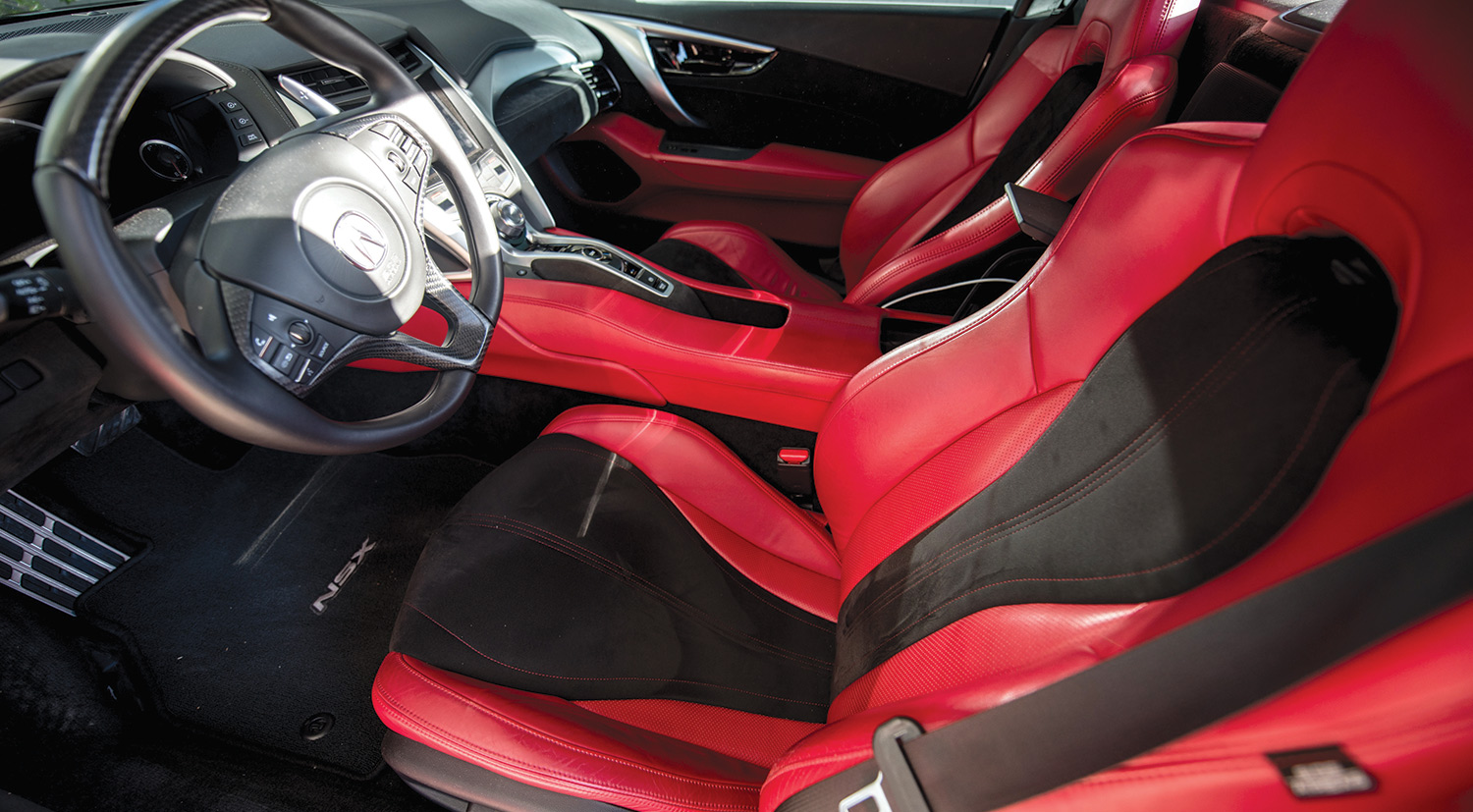
Because of the “by wire” aspects of the car, at first we weren’t quite sure we liked the feel of the NSX. But over time—and after flying through an untold number of turns at incredible speed and with great precision—both I and my companion learned to trust, and then to like, the onboard systems. The car was never going to feel like another car because it isn’t like any other car. Once we got past comparing it, we began to love it. Furthermore, beyond the satisfaction that more dramatic feedback provides in traditional vehicles, the NSX collects more information every second than any human driver could ever comprehend and makes better use of it than anyone ever would. My associate and I are both capable drivers, but the car’s ability to manage its own systems outpaced our abilities rather quickly, allowing us to take turns at greater speeds than I would have otherwise done, managing downshifts into turns far more quickly and with better timing than I likely would have, and so on. The paddles are there and you can use them to manage things manually, but why? For a rather large group of drivers, we suspect the new NSX will allow them to experience a level of performance, handling and speed that they otherwise would be unable to achieve—you’re faster in this car, though I’ll pause to mention that it doesn’t make you a better driver, exactly, even if it yields better performance.
This, really, is the point. If you’re a decent enough driver, you’ll get a lot more experience for the money than with other options. If you’re a world-class driver, I suspect your experience will be that much greater. The amenities you’d expect are here: a top ELS Studio audio system that makes any driving soundtrack sound that much better; sophisticated navigation and smartphone integration; all manner of customizable features; incredible displays; dual-zone climate control with humidity control and air filtration; and on and on. We’ve never been in a car in which the various modes present such different experiences (this is a good thing), and the “wow” factor is such that we’re sure there’s a photo of the car on every phone on the West Coast. Add to that the facts that we were able to last longer playing on the backroads even as we watched others in our group peel off to refuel; that we drove more than 500 miles on a mix of surfaces and never felt uncomfortable or that the car was challenged (even on loose gravel); and that we came to the car skeptical and left impressed and you have a tremendous vehicle in the new NSX. Will it redefine the supercar category like its predecessor did? We don’t know. But whatever you think of the drive-by-wire systems, the technologies at play and the fact that it could prove an acquired taste for traditionalists, it’s a strong bet that the supercars of the future will more closely resemble the 2017 NSX than they will anything else currently on the road. For those who want to drive on the cutting edge, this is it.
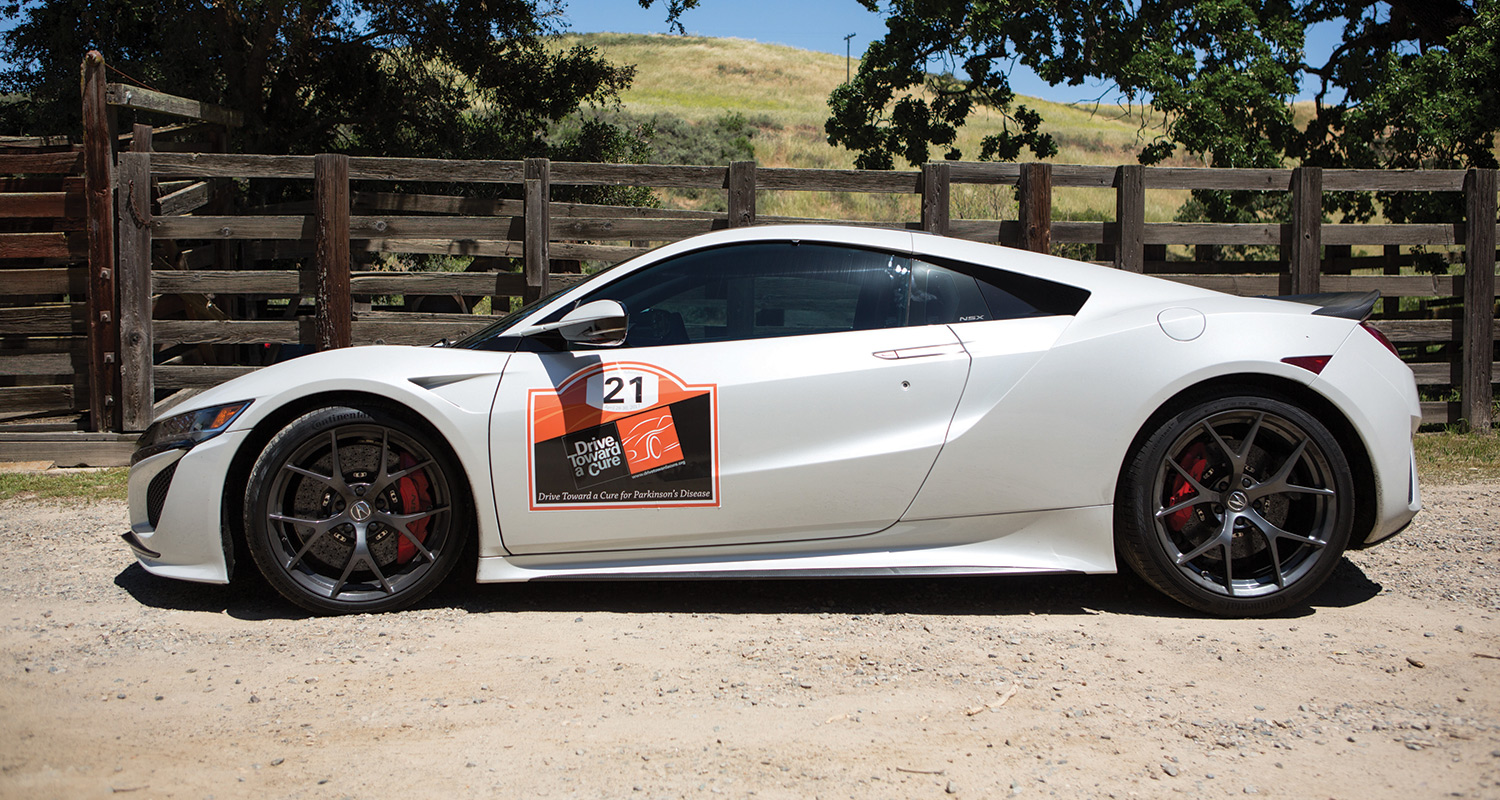
Over two days driving a supercar from San Francisco to Los Angeles, my photographer and I couldn’t help but discuss the importance of control and how much we take it for granted, especially in modern performance vehicles. How appropriate, then, that our drive in the fantastic 2017 Acura NSX was part of a Drive Toward a Cure event to raise money for Parkinson’s research. A long-term degenerative disease that affects the central nervous system, most obviously impacting control of the motor system but also causing other issues, Parkinson’s is misunderstood by many, and misconceptions about the disease mean that it doesn’t get the same amount of attention as some others, despite it affecting more than 6 million globally and being responsible for more than 100,000 deaths each year. Chief among the misconceptions is that it only affects the elderly. Actor Michael J Fox was 29 years old when he was diagnosed, and the Drive Toward a Cure event benefitted both his foundation and the Parkinson’s Institute and Clinical Center, which is leading the fight against the disease. To learn how you can participate in a Drive Toward a Cure event—enjoying great driving and camaraderie for a great cause—or to learn more about what you can do in the fight against Parkinson’s, visit drivetowardacure.org
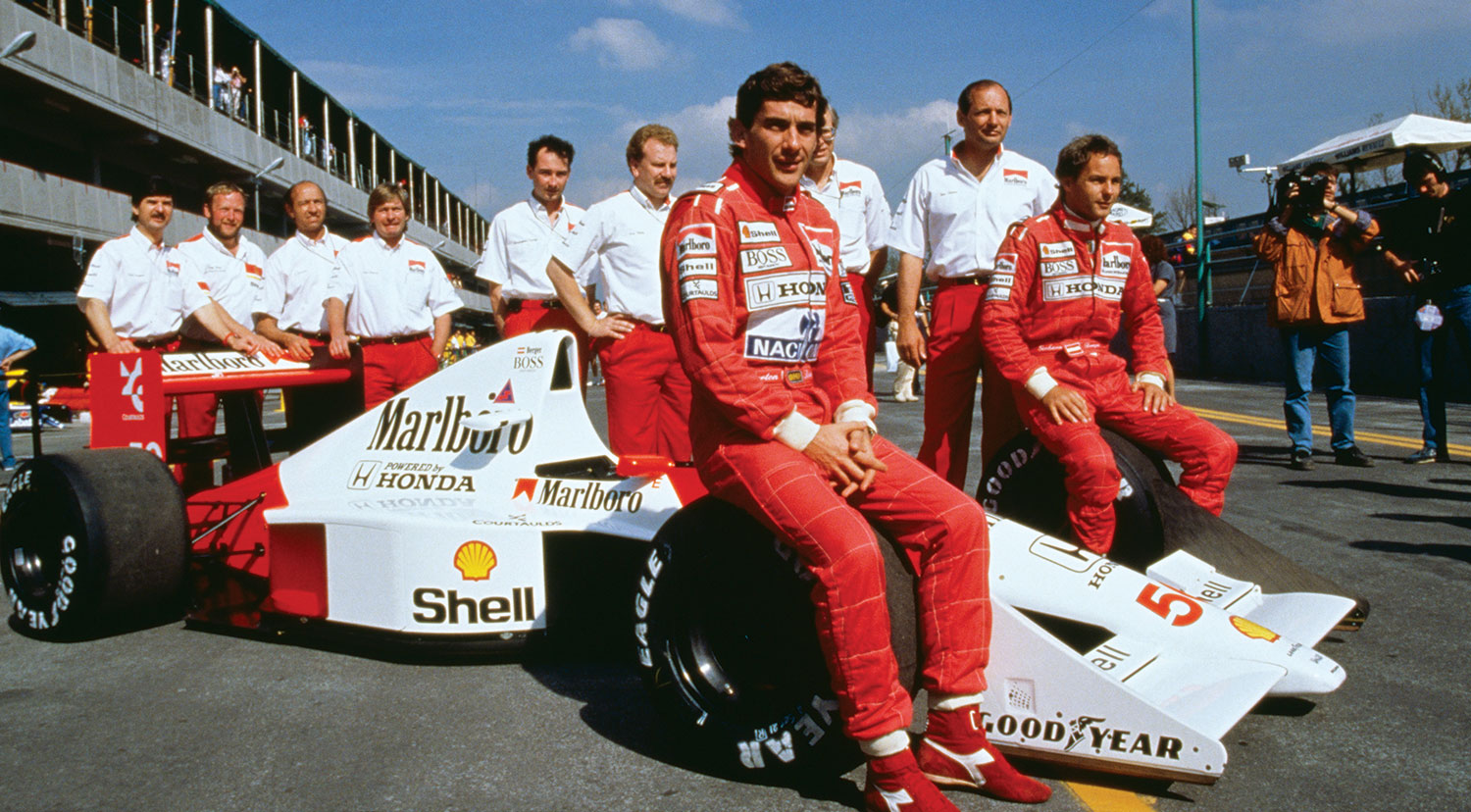
In February of 1989, Ayrton Senna was fresh off winning the previous year’s F1 championship over his main rival and McLaren-Honda teammate, Alain Prost, and he was gearing up for the next season. While the Brazilian was testing his race car at Japan’s Suzuka Circuit, Honda engineers asked him to take a few laps in their new production effort, the NSX, which was near to launch. Expecting accolades, they were stunned when Senna returned with a verdict of “a little fragile,” according to a 2014 Brendan McAleer article in Road&Track. Determined, they headed to a company research facility at Germany’s Nürburgring, where Senna was invited to offer additional input. The end result was a 50 percent increase in chassis stiffness and numerous other Senna tweaks that resulted in one of the finest production cars ever released. The vehicle proved particularly bothersome to Ferrari, which rather hastily had brought the 348 to market once it became clear the NSX would dominate that car’s predecessor, the 328, and for far less money. If that wasn’t enough for the Italians, Senna used his Honda engine to take the 1990 Formula One championship over Prost, who’d left McLaren in 1989 to drive for Ferrari. The track where the championship was decided: Suzuka.

Follow Us On


| Cookie | Duration | Description |
|---|---|---|
| cookielawinfo-checkbox-analytics | 11 months | This cookie is set by GDPR Cookie Consent plugin. The cookie is used to store the user consent for the cookies in the category "Analytics". |
| cookielawinfo-checkbox-functional | 11 months | The cookie is set by GDPR cookie consent to record the user consent for the cookies in the category "Functional". |
| cookielawinfo-checkbox-necessary | 11 months | This cookie is set by GDPR Cookie Consent plugin. The cookies is used to store the user consent for the cookies in the category "Necessary". |
| cookielawinfo-checkbox-others | 11 months | This cookie is set by GDPR Cookie Consent plugin. The cookie is used to store the user consent for the cookies in the category "Other. |
| cookielawinfo-checkbox-performance | 11 months | This cookie is set by GDPR Cookie Consent plugin. The cookie is used to store the user consent for the cookies in the category "Performance". |
| viewed_cookie_policy | 11 months | The cookie is set by the GDPR Cookie Consent plugin and is used to store whether or not user has consented to the use of cookies. It does not store any personal data. |